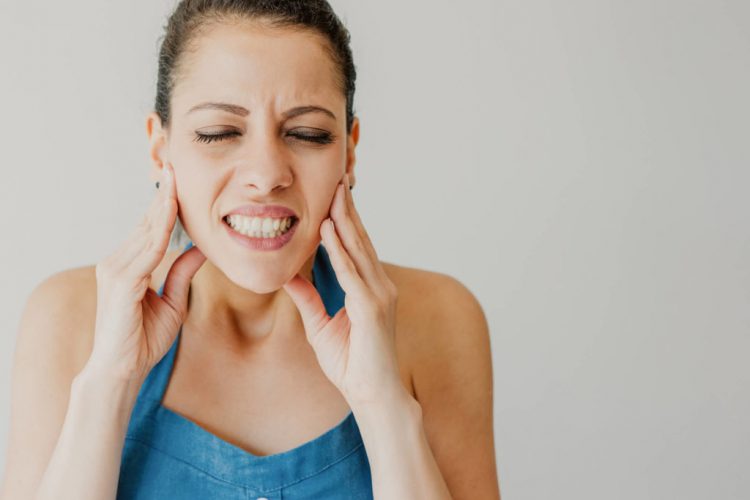
Bruxism: A Word That Sets Our Teeth on Edge!

Simply put, bruxism is excessive, repetitive teeth grinding or jaw clenching. This excess pressure can cause pain in muscles and teeth. It can even lead to a tooth shattering. The jaw joint also suffers from this severe pressure, leading to premature wear of the articular surfaces. It is possible to engage in awake (or diurnal) bruxism or sleep (nocturnal) bruxism, with or without perceptible noise.
Moreover, this condition can lead to a limited range of jaw opening mobility, which limits food options and can cause headaches. These signs and symptoms generally appear upon waking up or after a meal.
The Most Frequent Causes
Poor occlusion
Asymmetrical occlusion, or imperfect contact among the dental surfaces, is one of the main causes. The jaw is always in search of “perfect” occlusion. Poor occlusion can result from the dental morphology, a needed repair, or a missing tooth, which reduces the contact surface for chewing. This inconsistency can also cause uneven muscle strength, which may lead to bruxism.
Stress
Stress is a possible cause of bruxism. One manifestation of stress is the presence of para-functional habits (tics) involving the mouth, such as nail-biting, jaw-clenching, and excessive gum-chewing. All of these actions subject the jaw to asymmetrical force, which leads to exaggerated, inappropriate demands on the muscles.
Posture
Poor neck posture can be the source of inappropriate muscle tension. Neck posture affects head position, changing the contact point between the skull and the mandible (jawbone). This can, in turn, cause a change in articular pressure, impairing masticatory strength. As a result, the active muscles (primarily the masseter, temporal, and pterygoid muscles) are not optimally aligned and work asymmetrically.
Treatment and Prevention Options
If you suffer from bruxism, the first professionals you should consult are your physical therapist and your dentist.
Getting an oral health check-up to optimize your occlusion will be an important first step. If you wear dentures, your denturist will be have a role to play in your rehab process. In some cases, particularly if you have sleep bruxism, a biteplate may be an option.
Your posture, muscle tension, and the joint integrity of your jaw will need to be evaluated. With that information, we will be able to analyze the issue and choose from a variety of treatment approaches:
- Internal and external manual therapy techniques: massage and joint mobilization;
- Analgesic methods including ultrasound;
- Posture and pain management recommendations;
- Lifestyle recommendations: para-functional habits, eating (chewing, mouth opening);
- Specific exercises;
- Acupuncture (with needles) in physical therapy is useful in some cases
- Orofascial and cranial approach
Bruxism is a multifactorial condition. That is why effective communication between health care professionals is such a high priority. Don’t hesitate to ask questions of your physical therapist or your dentist.


